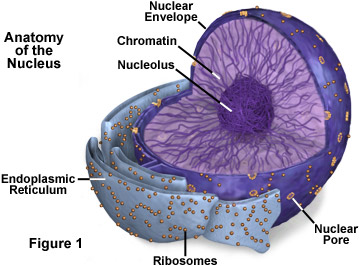"Ion" refers to an excess or deficiency of electronic charge. Ions are formed when an atom gains or loses an electron, meaning the atom will no longer be neutral. Atoms with more protons are positive, and atoms with more electrons are negative.
Example: dissolve salt in water and it will dissociate into sodium and chlorine ions.
2. Discuss the nature of covalent bonding using water as an example.
Water is a covalent bond because the two hydrogen's in H2O share the outer electrons with oxygen.
3. Describe the difference between polar and non-polar covalent bonds.
Polar bonds in my memory trick are "greedy" bonds that have one atom that is electronegative and the electrons are shared unequally. Non-polar bonds (not greedy bonds) are symmetrical and share electrons equally.
4. Illustrate what is meant by a hydrogen bond.
(already posted on blog)
5. Distinguish between organic molecules and inorganic ones.
Organic compounds must have carbon and hydrogen. Example: carbohydrates, proteins and lipids.
Inorganic compounds have either one or none of carbon and hydrogen. Water is inorganic as it only has hydrogen and carbon dioxide is also inorganic
6. Discuss how water dissolves substances like table salt and sugar.
Water is a polar solvent, that when introduced to salt rips apart the molecule by connecting its negative charges to the positive ones in salt (and positive charges with salts negative charges) ultimately seperating the salt pieces and dissolving it in the water.
7. Describe the difference between hydrophobic and hydrophobic substances. Explain the reasons for the difference in their chemical behavior.
A hydrophilic material is a friend of water. Friends like to come closer, so a water droplet would spread on a hydrophilic surface. A material that is hydrophobic would be afraid of water, it would stay away from water as if it had a "phobia" (phobic) of water.
8. Explain the process of hydrophobic interaction.
Hydrophobic, nonpolar substances have a tendency to repel water molecules. The name, literally meaning "water-fearing," this explains the segregation between water and nonpolar substances. This interaction explains the separation of a mixture of oil and water.
9. Identify the role that water plays in many cellular chemical reactions.
Acids: Sour tasting, pH lower than 7, create H ions
Water plays a very important role in cellular chemical reactions, that for example support plant life. Water is very important to cellular respiration and photosynthesis in plant leaves. Without those reactions and water, plants would not be able to survive.
10. Define acid, base and relate them to the pH scale.
Acids: Sour tasting, pH lower than 7, create H ions
Bases: (alkaline) feel slipper, pH higher than 7, create OH ions

11. Discuss the theory of "buffering" and explain why the process is important to maintenance of cells.
Buffers and "buffering" are very important to cells because without them, a cell could easily become too acidic or to basic. Either way, it is harmful to the cell, as it should be at a pH of 7.4. Buffers balance out the pH to a reasonable limit within a substance including cells.
12. Identify the 3 unique properties of water in terms of temperature change and relate theses characteristics to the presercation of cells.
-Water has a high specific heat, which is the amount of energy required to change the temperature of a substance. Because water has a high specific heat, it can absorb large amounts of heat energy before it begins to get hot. It also means that water releases heat energy slowly when situations cause it to cool. Water's high specific heat allows for the moderation of the Earth's climate and helps organisms regulate their body temperature more effectively.
-Water conducts heat very easily, cuasing large bodies of liquid (lakes, oceans) uniform temperature profile. Meaning that organisms won't boil or freeze rapidly.
-Water is a solvent that is able to dissolve a large number of different chemical compounds. This feature also enables water to carry solvent nutrients to plants and living organisms.
13. Discuss the importance of the unusual nature of water as a solid, to the living things.
14. outline the importance of the cohesiveness of water to animals and plants.
Waters cohesiveness is extremely important to animals and plants because humans for example are made of 60% water, and plants move water around their stems to survive. Water is able to stick together with hydrogen bonds and move in a continuous stream which is beneficial to a living organisms survival.



